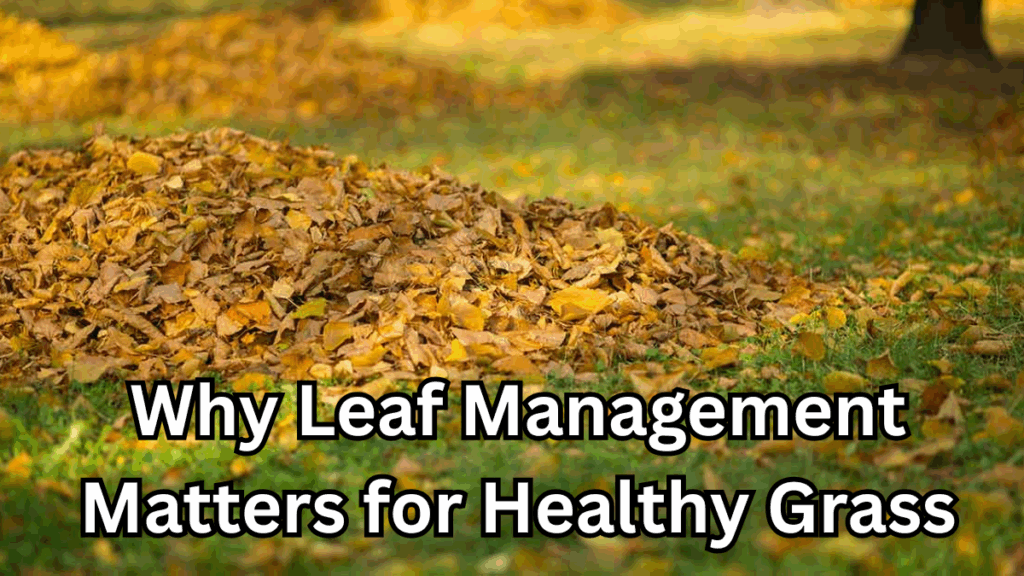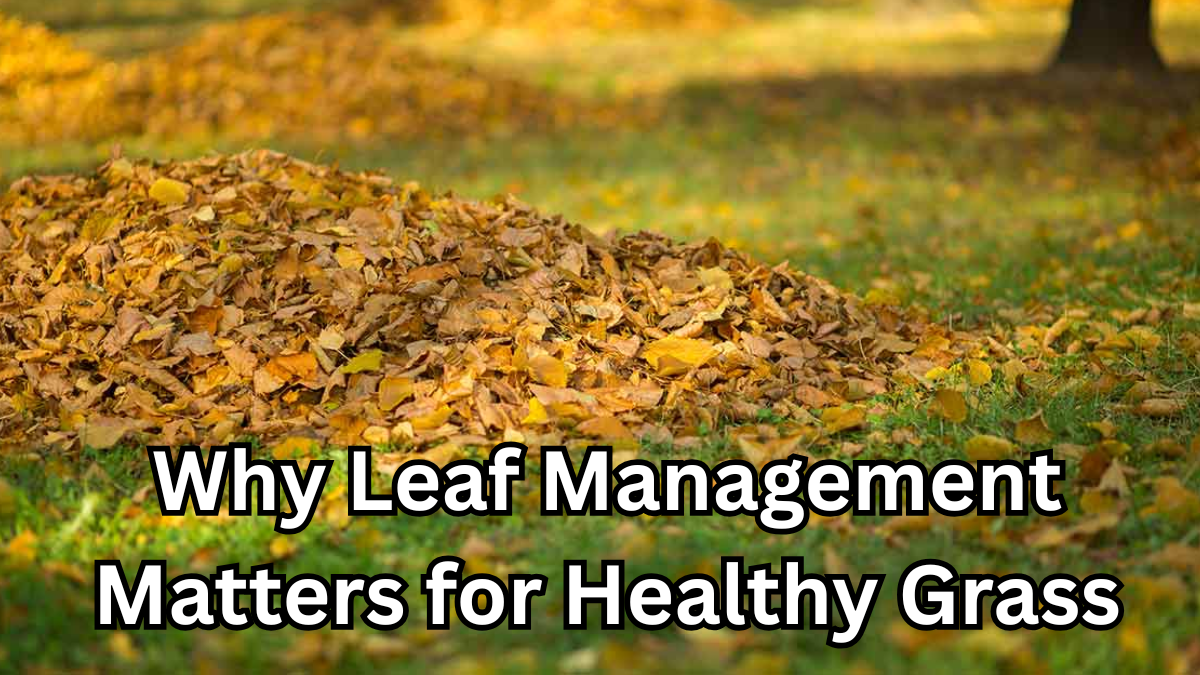As the crisp autumn air arrives, many homeowners face a familiar sight: leaves blanketing their lawns. While they may seem harmless, leaving fallen leaves unattended can harm your grass. Effective leaf management for lawns ensures a lush, healthy, and green yard all year long.
Proper leaf control isn’t just about aesthetics—it’s about giving your grass the nutrients it needs while preventing issues like fungal growth, thatch buildup, and lawn damage. Let’s dive into why leaf care is crucial and which method—mulching or raking—works best for your lawn.

The Importance of Leaf Management for Lawns
Neglecting fallen leaves can cause more than just an untidy yard. Here’s why leaf management for lawns is essential:
-
Preventing Thatch Accumulation: Wet leaves can contribute to a thick layer of thatch, restricting water, air, and nutrients from reaching grass roots.
-
Maintaining Nitrogen Levels: Decomposing leaves release nitrogen, an essential nutrient for grass growth. Proper mulching helps recycle it back into your lawn.
-
Reducing Disease Risk: Piles of damp leaves create a breeding ground for mold, fungi, and pests.
-
Enhancing Lawn Health: Regular leaf removal improves sunlight penetration, ensuring consistent growth and vibrant green color.
Mulching Leaves: Pros and Cons
Mulching involves chopping leaves into fine pieces using a mower with a mulching attachment. These small fragments decompose quickly, adding nutrients back to the soil.
Benefits of Mulching
-
Recycles nitrogen naturally into your lawn.
-
Reduces waste by eliminating the need for bagging.
-
Minimizes labor and saves time.
-
Helps maintain soil moisture during dry periods.
Drawbacks of Mulching
-
Not ideal for thick or wet leaf layers.
-
May require multiple passes to prevent clumping.
| Factor | Mulching Leaves |
|---|---|
| Labor Intensity | Low |
| Nutrient Return | High (adds nitrogen) |
| Time Required | Medium |
| Best Leaf Type | Thin, dry, or small leaves |
| Effect on Thatch | Minimal if done correctly |
Raking Leaves: Pros and Cons
Raking is the traditional method, physically removing leaves from your lawn. While more labor-intensive, it can be effective in specific situations.
Benefits of Raking
-
Prevents excessive thatch buildup.
-
Keeps the lawn clear for late-season growth.
-
Ideal for wet or heavy leaves.
Drawbacks of Raking
-
Labor-intensive and time-consuming.
-
Leaves need to be composted or disposed of.
-
Minimal nutrient return compared to mulching.
| Factor | Raking Leaves |
|---|---|
| Labor Intensity | High |
| Nutrient Return | Low |
| Time Required | High |
| Best Leaf Type | Wet, heavy, or thick layers |
| Effect on Thatch | Helps reduce excessive thatch |
Choosing Between Mulching and Raking
Your choice depends on the type of leaves, lawn size, and desired outcome:
-
Small, thin leaves: Mulching is efficient and nutrient-friendly.
-
Large, wet, or heavy leaves: Raking is safer to prevent clumping and suffocation of grass.
-
Mixed approach: Mulch lighter leaves and rake heavier ones for optimal lawn health.
Additional Tips for Healthy Lawns
-
Mow your lawn slightly higher in fall to prepare for winter.
-
Avoid leaving thick leaf layers on grass for more than a week.
-
Compost collected leaves to create nutrient-rich soil for spring gardening.
-
Use a mulching mower regularly to naturally recycle nutrients like nitrogen.
FAQs
1. Can I leave leaves on my lawn all winter?
No. Leaving thick layers can smother grass, promote fungal growth, and create thatch issues. Light mulching is okay, but heavy piles should be removed.
2. Does mulching add nutrients to the soil?
Yes. Mulching leaves decomposes them into fine pieces, returning valuable nitrogen and other nutrients to your lawn naturally.
3. How often should I rake or mulch leaves?
Aim for weekly leaf management during peak fall season. This keeps your lawn healthy and prevents thick layers from accumulating.
4. Can I use mulched leaves as compost?
Absolutely. Mulched leaves break down faster and can be added to compost bins or directly to garden beds to enrich soil.
Click here to learn more
